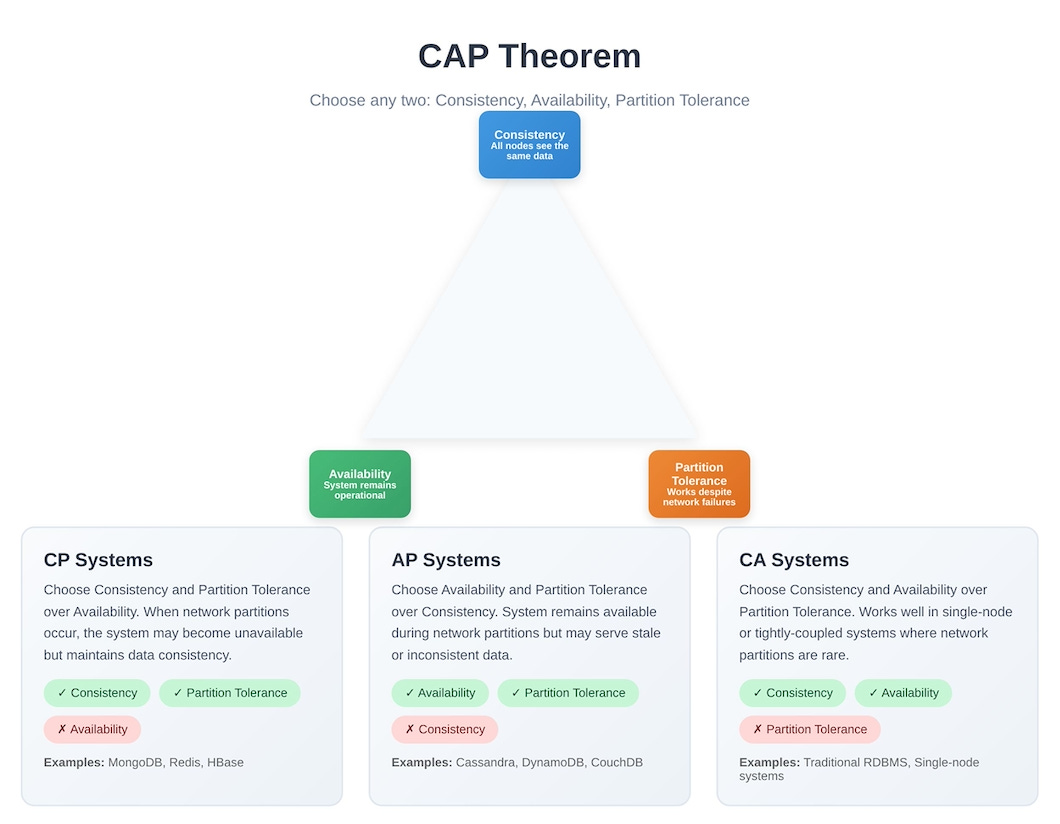The CAP Theorem: Why Your Database Can't Have It All (And That's Okay)
Understanding one of the most important concepts in distributed systems
Ever wondered why your favorite apps sometimes show "Service Unavailable" during peak traffic, while others keep working but show you outdated information?
Today, we're diving into the CAP theorem – a fundamental principle that explains why distributed systems can't be perfect, and how understanding this limitation makes us better engineers.
What Is the CAP Theorem?
Imagine you're running a pizza delivery service with multiple locations across the city. The CAP theorem says you can only guarantee two of these three things at any given time:
Consistency - All locations have the exact same menu and prices
Availability - Every location stays open and takes orders
Partition Tolerance - Locations can operate even when phone lines go down
The cruel reality? You can only pick two.
The Three Pillars Explained
Consistency (C)
Every node in your system shows the same data at the same time. When you update your profile picture on social media, everyone sees the new photo immediately – no exceptions.
Think: A bank account balance that's always accurate across all ATMs.
Availability (A)
Your system responds to every request, even if some parts are failing. The service never says "sorry, we're down" – it always gives you some answer.
Think: A weather app that always shows you something, even if it's yesterday's forecast.
Partition Tolerance (P)
Your system continues working even when network connections fail between servers. Parts of your system can't talk to each other, but they keep functioning independently.
Think: Airport terminals that operate independently when the central communication system fails.



